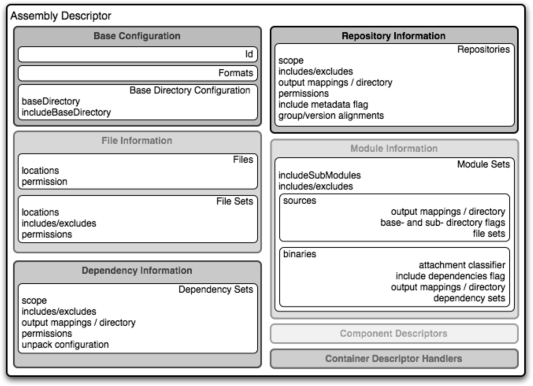Overview of the Assembly Descriptor
When the standard assembly descriptors introduced earlier in the section Assembly Basicsâ are not adequate, you will need to define your own assembly descriptor. The assembly descriptor is an XML document that defines the structure and contents of an assembly. See Figure 12-1.

Figure 12-1. Assembly descriptor
The assembly descriptor contains five main configuration sections, plus two additional sections: one for specifying standard assembly-descriptor fragments, called component descriptors, and another for specifying custom file processor classes to help manage the assembly-production process. These five sections are:
- Base configuration
This section contains the information required by all assemblies, plus some additional configuration options related to the format of the entire archive, such as the base path to use for all archive entries. For the assembly descriptor to be valid, you must at least specify the assembly ID, at least one format, and at least one of the other sections shown in this list.
- File information
The configurations in this segment of the assembly descriptor apply to specific files on the file system within the projectâs directory structure. This segment contains two main sections:
filesandfileSets. You usefilesandfileSetsto control the permissions of files in an assembly and to include or exclude files from an assembly. ...
Get Maven: The Definitive Guide now with the O’Reilly learning platform.
O’Reilly members experience books, live events, courses curated by job role, and more from O’Reilly and nearly 200 top publishers.

